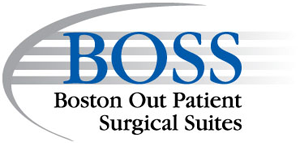Women are at Higher Risk for Musculoskeletal Disorders

Research shows that women are at higher risk of developing musculoskeletal disorders — in fact, women are twice as likely to develop some of them.
These orthopedic disorders often cause joint or muscle pain and inflammation — and can seriously impact not only a woman’s quality of life, but sometimes even her ability to walk or perform normal daily activities.
About Musculoskeletal Disorders
Here are some terms to better understand musculoskeletal issues:
- Musculoskeletal System: The body’s joints, muscles, tendons, ligaments, nerves, discs, blood vessels, as well as the structures that support the neck, back and limbs.
- Musculoskeletal Disorder: An injury or pain that impacts this system, hampering the functioning of the body’s movements. Pain from musculoskeletal disorders can be felt in different areas of the body, such as the upper and lower back, shoulders, neck, feet, legs, arms and hands. Examples of musculoskeletal disorders include osteoarthritis, carpal tunnel syndrome, tendinitis, osteoporosis, rheumatoid arthritis, gout and lupus.
Higher Risks for Women
Awareness is key to reducing musculoskeletal disorders in women. Women have a higher risk of:
- Tearing a knee ligament
- Spraining an ankle
- Developing osteoarthritis of the knee
- Fracturing a hip due to osteoporosis
- Tearing an anterior cruciate ligament (ACL)
Preventing Musculoskeletal Disorders
- Healthy nutrition and lifestyle choices can reduce a woman’s risk of osteoporosis. Steps to take include eating foods that are high in calcium and vitamin D, avoiding caffeine, stopping smoking, exercising daily, and limiting alcohol intake. For more tips, visit the National Osteoporosis Foundation.
- Female athletes tear their ACLs more often than males primarily because they use their muscles and ligaments differently when jumping, pivoting and landing. However, through proper training, most women can learn to land differently to reduce the risk of tearing an ACL. The Santa Monica ACL Prevention Project developed the PEP training program (Prevent injury, Enhance Performance) to help female soccer players avoid ACL injuries. Click here to see the full PEP Program.
- Take care when lifting heavy objects, since some musculoskeletal disorders can be triggered by improper lifting. For safe lifting practices, visit the U.S. Department of Labor OSHA website.
- Work that is highly repetitive, or involves exposure to repeated force, vibration or an awkward posture can contribute to musculoskeletal disorders. Since every workplace is unique, talk to your doctor or employer about ways you can make adjustments to reduce your risk at work.
For More Information
If you are a woman who has a musculoskeletal disorder, contact an orthopedic doctor to see what pain-relieving options may be available to you. Keep in mind that seeking care sooner rather than later is always wise, since you may be able to avoid increased pain, further joint damage or the need for surgery.
Finally, why not take a step today, and share this article to help the women in your life reduce their own risk of musculoskeletal disorders? Just one small tip could help them avoid joint pain in the future.
